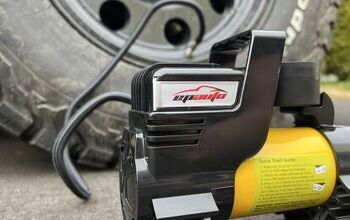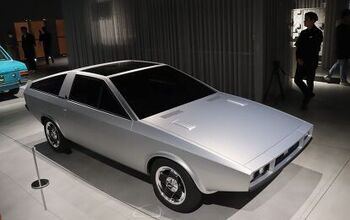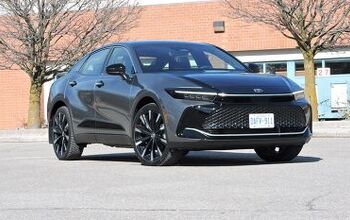2013 Scion FR-S Vs 2013 Hyundai Genesis Coupe 2.0T R-Spec

Affordable rear-wheel drive sports coupes, especially those hailing from the other side of the Pacific, have historically been a rather rare breed. But now, thanks to Hyundai and Scion, us regular folk have not one but two inexpensive rear-wheel drive sports coupes to choose from that don’t feature big thirsty engines or pony car badges.
FAST FACTS
| 1. 274-hp and 275 lb-ft thanks to a new turbocharger and larger intercooler. |
| 2. Peak torque reached at just 2000 rpm. |
| 3. R-Spec model includes 4-piston Brembo brakes, a Torsen limited slip differential, revised suspension tuning and summer tires. |
| 4. Genesis Coupe models start from $24,250 with our R-Spec model costing $26,500. |
The Genesis Coupe 2.0T R-Spec and FR-S are priced well under $30k, have been tuned with the enthusiast-driver in mind, and are equipped with 2.0-liter 4-cylinder engines that offer an attractive combination of performance and fuel economy. But which one’s fastest? And does fastest necessarily mean “best” for a car like this? Only one way to find out – it’s off to the race track we go, to evaluate these two hard-edged combatants in order to determine which one turns the fastest hot lap and which one offers the most smiles per mile.
KDM VS JDM
Korean automotive juggernaut Hyundai just keeps on raising the bar with just about everything it brings to market these days and the extensively updated 2013 Genesis Coupe is no exception. We liked the original 2.0T coupe when it first hit the market as a 2010 model (we even track tested it against the Honda Civic Si), and although we’re not sure about the front end design changes for 2013, there’s no disputing the fact that Hyundai has upped the ante in a big way by giving the car’s 2.0-liter turbocharged engine an extra 74-hp (up from 200 to 274) and 52 extra lb-ft of torque (up from 223 to 275).
FAST FACTS
| 1. 2.0L flat-four cylinder engine makes 200-hp and 151 lb-ft of torque. |
| 2. 2,758 lbs curb weight makes it one of the lightest sports coupe on the market. |
| 3. Sold as just one trim, your only choice is a 6-speed manual or automatic with paddle shifters. |
| 4. FR-S models cost $24,200. |
But we’re not testing just any Genesis 2.0T coupe – we’ve got our hands on the R-Spec version, which comes standard with a Torsen limited slip differential, big 4-piston Brembo brakes, and stickier Bridgestone summer tires (225/40R19 up front and 245/40R19 out back). Unlike a lot of R-badged vehicles from other manufacturers, Hyundai hasn’t put the Genesis 2.0T R-Spec coupe on a diet though. It tips the scales at a hefty 3,399 lbs, but it still has the superior weight-to-power ratio in this shootout (12.4-lbs per horsepower for the Genesis vs 13.8-lbs per horsepower for the FR-S).
The Scion FR-S (or Toyota GT86 as it’s known in Japan and Europe) is a considerably smaller and lighter machine than the Genesis, and as Lotus taught the world, lightness delivers improved performance in every measurable way, from braking and cornering to fuel consumption and tire usage. The Scion’s smaller and lighter footprint also means a tighter and less luxurious interior, though my 6-foot 200-lbs frame never felt cramped or otherwise uncomfortable in it. The FR-S’s front seats are bolstered with serious lateral g-forces in mind, and the small race-inspired steering wheel and Spartan interior (there isn’t even a cover on the storage bin between the two front seats) give it the look and feel of a machine that’s serious about low mass and high performance.
Given the Scion’s very modern sheet metal, which in some ways reminds me of its high-tech supercar brother the Lexus LF-A, I was a bit disappointed by the low-tech gauge cluster. Perhaps it’s asking too much of a car that retails for less than $25k, but I would have loved a low buck version of the brilliant digital dash in the LF-A.
It should also be noted that the rear seats are more of a shelf for a briefcase during the week and a set of track wheels and tires on the weekend – humans with legs certainly won’t fit back there. But that’s part of the price you pay when opting for a sports coupe with a curb weight of just 2,758 lbs, a number that makes the FR-S quite possibly the lightest non-exotic sports coupe on the market today.
LET THE GAMES BEGIN
Get the Flash Player to see this player.
Before going into “attack mode” to determine which of these Asian sports coupes is quickest around our 1.86-mile 11-turn test track, Editor-in-Chief Colum Wood and I spent a few laps (re)familiarizing ourselves with each machine. This was my first time behind the wheel of the refreshed and more powerful Genesis 2.0T, and I was immediately struck by its strong acceleration. The 2013 engine provides the kind of punch necessary to have some tail wagging fun coming out of corners, and in a straight line there’s no question it’s making all of the reported 274 ponies.
I was also immediately struck by the relatively high seating position and the guessing game I was playing with the 6-speed manual transmission in the Genesis. Downshifting was never a problem, but making the up-shift from 2nd to 3rd gear resulted in more than one bounce back into neutral. With a few more laps I learned that this gearbox requires a less enthusiastic (read: slower and less forceful) shifting technique, so with a lighter touch and through muscle memory (rather than any precision within the transmission itself) making a smooth up-shift to 3rd gear was no longer a problem.
Interestingly, those extra few laps to figure out the Genesis’ gearbox revealed two unexpected problems – understeer and brake fade. Normally I expect understeer and plenty of it from a road car, since just about every automaker dials in some front push as a safety measure. But with that R-Spec badge and the revised suspension tuning that goes with it – including upsized anti-sway bars, stiffer springs and firmer shock dampening – I didn’t anticipate as much understeer as I experienced once I dialed up the aggression. Based on the way the understeer worsened each lap, the root cause was certainly overheated and overwhelmed front tires, but Hyundai’s engineers also played it a bit safe with the R-Spec’s suspension settings and really could have given it a more willing character with better at-the-limit balance.
The bigger surprise came in the form of near-terminal brake fade after just three hot laps. With R-Spec Brembo brakes on all four corners, I certainly wasn’t expecting to have that “Oh God, where have the brakes gone?” feeling, and yet that’s exactly what both Colum and I experienced after a few flying laps around out test track. Things were bad enough on a few occasions that even ABS wasn’t slowing the Genesis at anywhere near the anticipated rate, so we knew it was time to park it and let the system cool down completely before doing some proper timed laps.
Jumping into the FR-S, the lower seating position and driver-focused controls were immediately apparent. Accelerating down the front straight, the rev-happy boxer flat-four engine propelled the Scion with greater enthusiasm that I was expecting, no doubt a sensation owed in part to the FR-S’s lightness. But where the real magic happened was in Turn 1, a 3rd gear righthander that always induces understeer thanks to looking faster on entry than it really is. And yet as soon as I turned the FR-S into this corner it immediately went into a nice little four-wheel drift. What was going on here?!
Turns out all the hype about the FR-S being supremely well balanced thanks to its low center of gravity is not an exaggeration, because that four-wheel drift could instantly be turned into a tail-out powerslide with more throttle and more steering angle or reigned back into grip mode with a touch of countersteer and a slight lift of the gas pedal. A few corners later and it was already abundantly clear that this little rear-drive coupe is as pure a driving machine as I’ve tried in a very long time. In many ways it reminded me of a Lotus Elise, both because of its lightweight feel on the road and because of its razor sharp reflexes.
Think about that for a second. This $24,200 Scion triggered a comparison with the exotically constructed and three-times pricier Lotus Elise. What is going on here? A few more laps in the FR-S and I decide to park it, this time for no other reason than wanting its skinny little all-season Michelins to last through the day. I certainly didn’t park it because of brake fade or understeer, because the FR-S exhibited neither of these. What it did exhibit was a hooligan spirit that begs you to drive it sideways at every opportunity. This thing isn’t a road car; it’s a drifting machine that just happens to be street legal!
The only criticism I can render against the FR-S was a lack of precision within its gearbox. The shifting action was shorter and faster than in the Hyundai, but there was vagueness to the Scion’s gating that did not inspire confidence when banging through the gears at full boil. I had to sit in the paddock and row through the gears a few times before I felt like I knew where each gear was and that’s not something I typically have to do with a performance-oriented vehicle. I’m also not a fan of the weakly offset 17-inch wheels and the lack of mechanical grip provided by those 215 section width all-season tires, but these are both shortcomings easily addressed by an aftermarket upgrade.
AND THE STOP WATCH SAYS
I know, it sounds like the Scion is the hands down winner, but Shakira’s hips don’t lie and neither does our stop watch (ok, we actually used a Vbox data acquisition system). In the battle against time, it was the Hyundai Genesis and its powerful turbocharged engine that posted the quickest lap with a time of 1-minute 25.0-seconds. That’s a very respectable number around our test track, especially for a car in this price range. As a point of comparison other than the Scion, I did a 1:26.4 in a Mazdaspeed3 and a 1:28.5 in a Honda Civic Si during a comparison test we did last summer. The Genesis also consistently pulled 1g of lateral force in the corners with a peak of 1.08 and slowed with longitudinal forces between 0.8 and 0.9g (when the brakes weren’t fading). Again, all very respectable numbers, even if from the driver’s seat the R-Spec wasn’t as communicative or as willing to change direction as the Scion.
Compare Specs
| Vehicle | 2013 Genesis Coupe 2.0T R-Spec | Advantage | 2013 Scion FR-S |
|---|---|---|---|
| Engine | 2.0L Turbo I4 | - | 2.0L Flat-4 |
| Horsepower | 274 | Genesis | 200 |
| Max. Torque | 275 | Genesis | 151 |
| Fuel Economy | 21 MPG city / 30 MPG hwy | FR-S | 22 MPG city / 30 MPG hwy |
| Transmission | 6-Speed Manual | - | 6-Speed Manual |
| Weight | 3,399 lbs | FR-S | 2,758 lbs |
| Power-to-Weight Ratio | 12.4 lbs/hp | Genesis | 13.8 lbs/hp |
| Starting Price | $26,500 | FR-S | $24,200 |
The numbers the FR-S produced were quite intriguing, since it not only posted a lap time much quicker than I had anticipated, it also posted impressive lateral and longitudinal g-force data despite how much tire grip it was giving up to the Genesis. Still, with a best lap of 1:26.2 the FR-S was more than a second and a half slower than the Hyundai (but virtually on par with the MS3 and faster than the Civic Si), and with some minor setup changes the Genesis could be a lot faster while the FR-S feels like it made use of every iota of performance available to it.
Given its horsepower and power-to-weight disadvantage, it was no surprise to see the FR-S hit a maximum velocity of 92 mph, 8 mph slower than the Genesis. But what was surprising was the Scion’s equally high cornering g’s despite its rather significant rubber (compound and section width) disadvantage. That says a lot about the Scion’s chassis balance and suspension tuning, but it couldn’t quite match the Genesis’ average or peak braking g-force readings, tires once again playing a major role here. What these numbers don’t tell you, though, is how much less braking the Scion had to do because of its low mass. I could not only move my braking points further down the straights in the FR-S, I spent less time braking and could transition back onto the gas sooner.
IS FASTER MORE FUN?
I’m a racer, so my answer has always been yes, faster is more fun. More grip means more speed and more speed means more fun, or at least it always has for me. So when Scion’s PR department first started going on about how they’d tuned the FR-S to be easy to drive at the limit by using narrow low grip tires, I went on a rant on a local motorsports forum about how this type of tuning is a disservice to the go-fast enthusiasts that are likely to buy the car and an insult to our collective motoring intelligence.
And then I drove the FR-S around our test track and everything changed.
As it turns out, the FR-S isn’t about going fast while driving on the racing line; it’s about going sideways with impunity. Normally I try to limit moments of oversteer as much as possible, both because sliding the rear of the car isn’t usually the fastest way around a corner and because a slight misjudgment can lead to a backwards trip into the weeds. But in the FR-S, all those instincts get tossed out the window because it feels so totally natural in a drift. It’s really quite remarkable that Scion, a division of one of the most conservative automakers in the world ( Toyota), has seen fit to offer us a car this well balanced and this willing to be anti-social (by going sideways every chance it gets).
The Genesis 2.0T R-Spec is, by comparison, a much more conventional machine. It does everything it can to keep you on the road, mostly be understeering as you approach and then surpass the limits of adhesion. There’s no question it is the faster of the two cars, and it’s also a far more luxurious and upscale feeling road car, and yet despite its impressive power delivery and R-Spec badge, it doesn’t stir my car guy soul the way the FR-S does. There’s just something missing from the Genesis; a raw edginess that all true driver’s cars have regardless of price point.
THE VERDICT
So although it pains the racer in me to write this, the slower car here is in fact a much more enjoyable machine to drive around the race track. The Scion FR-S isn’t just more fun though; it’s really a segment-busting, paradigm-shifting machine that redefines what a sub-$25k rear-wheel drive sports coupe is all about.
The FR-S isn’t about big power and macho looks the way pony cars are, and it’s not about combining luxury, technology and performance the way the Genesis does (and it does this very well). Nope, the Scion FR-S is about inducing the maximum amount of driving pleasure out of a minimal yet wonderfully balanced package. It’s a less is more machine, with the less part being weight and the luxury items that come with it, and the more part being the fun, usually of the sideways variety.
Scion FR-S, Hyundai Genesis Coupe 2.0T R-Spec
LOVE IT
- Incredible at-the-limit balance and driftability
- Low mass improves performance in every way
- Driver-focused interior provides great feel and sense of connection
- Impressive power from the 2.0L turbocharged engine
- Amenity-rich and spacious interior
- Luxury sports coupe styling inside and out
LEAVE IT
- Transmission lacks precision when shifting
- Back seat leg and headroom too cramped for human occupants
- 17-inch wheels and tires look undersized by today’s standards
- Vague transmission requires slow, deliberate shifting style
- Understeer at the limit despite R-Spec tuning
- High seating position doesn’t give that sports car feeling

Some say he's closely related to Bigfoot and that he's a former Canadian Touring Car Champion. All we know is he's the AutoGuide Stig! A thesis defense away from being your intellectual superior he's a professor of vehicle handling dynamics. The part-time touring car and time attack racer is faster (much faster) than your average auto journalist.
More by Dave Pratte































Comments
Join the conversation
Do they ever try the sport mode on frs, the sport mode will frs more power.
Is this compare automatic vs automatic r automatic vs manual